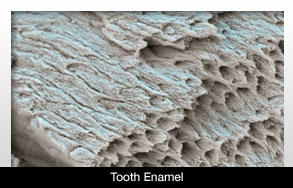 |
There’s new information that could lead to important nanoscale approaches to creating biomaterials.
The research comes from a University of Pittsburgh School of Dental Medicine team that analyzed tooth enamel. The study appears in the Proceedings of the National Academy of Sciences.
Dental enamel combines hardness and resilience and is the most mineralized tissue.
The study analyzed enamel after simulating enamel when it begins to form. According to Elia Beniash Ph.D., associate professor of oral biology at the Pittsburgh School of Dental Medicine, the goal was to determine the role of amelogenin, which is a regulatory protein.
The amelogenin molecules eventually assemble in a step-like fashion into larger structures. After the nanoparticles are in the correct order, they fuse together and crystalize before forming the finished product: enamel.
This information could be helpful in different aspects of dentistry, as well as other technologies.
Co-authors in this study included Ping-An Fang, Ph.D., and James F. Conway, Ph.D., both of Pittsburgh; Henry C. Margolis, Ph.D., of the Forsyth Institute, Cambridge, Mass.; and James P. Simmer, D.D.S., Ph.D., of the University of Michigan.

|











